- Kenmore refrigerator water filters
- Whirlpool refrigerator water filters
- Samsung refrigerator water filters
- GE refrigerator water filters
- LG refrigerator water filters
- Frigidaire refrigerator water filters
- KitchenAid refrigerator water filters
- Maytag refrigerator water filters
- Kenmore Elite refrigerator water filters
- Estate refrigerator water filters
- GE Profile refrigerator water filters
- Amana refrigerator water filters
- Bosch refrigerator water filters
- Dacor refrigerator water filters
- Electrolux refrigerator water filters
Can’t find your part? Contact us: +1-309-603-4777
Top DIY repair help
View All Repair Categories
Appliances
Lawn & Garden
Power Tools
Home Improvement
Sports & Leisure
Heating & Cooling
OrdersSchedule a repair
Keep track of the models you own in your profile
Sign in or Register to view or add models
Freestanding Freezer: Why isn't my freezer cooling?
If you hear the compressor running but the freezer doesn't cool, a sealed system problem such as a refrigerant leak or a failed compressor pump may be causing the problem. A service technician will need to fix a sealed system failure because the repair involves the recovery and recharge of the refrigerant.
If the freezer cools but doesn't cool down to 0 degrees, a failed thermistor may be inaccurately detecting freezer temperature or the electronic control board in the freezer may be inaccurately detecting the thermistor signal. Using the freezer's tech sheet as a guide, unplug the freezer and check the resistance of the thermistor using a multimeter. Replace the thermistor if its resistance differs from its expected resistance. If thermistor resistance is okay, check the resistance of the thermistor circuit from the wires that connect the thermistor circuit to the electronic control board. If you measure the same resistance through the wires that connect to the control board as you measured directly at the thermistor, then you'll need to replace the electronic control board because it isn't accurately detecting the thermistor signal. If the thermistor circuit resistance differs from the thermistor resistance, then a wiring failure in the thermistor circuit is interfering with the thermistor signal going to the control board. Find and repair the bad wiring. If your freezer uses a dial control, the cold control thermostat may not be sensing and controlling freezer temperature properly.
Problems in the automatic defrost system can also prevent the freezer from cooling. You'll typically see frost on the evaporator cover when the defrost system isn't working because the defrost heater isn't turning on to melt frost off the evaporator fins. The evaporator won't be able to cool the freezer well when the evaporator cooling fins are caked with frost because the frost blocks air passages over the fins. To check the defrost heater, unplug the freezer and check for continuity through the defrost heater element using a multimeter. If you don't measure continuity through the defrost heating element, replace it. If you measure continuity through the defrost heater, it's likely okay.
Check the defrost bi-metal thermostat next. A failed defrost bi-metal thermostat won't allow current to reach the heater. You can check for continuity through the defrost bi-metal. (Note: When the bi-metal warms up, it trips open to shut off the defrost heater to prevent the heater from overheating and damaging the evaporator so you can't check the bi-metal when it's above 15 degrees.) If you don't measure continuity through the bi-metal, replace it because it isn't allowing the defrost heater to turn on.
A failed defrost timer won't advance into the automatic defrost mode so the defrost heating element would never turn on to melt frost off the evaporator fins. You can check to see whether the defrost timer advances by manually advancing the defrost timer to the defrost cycle. Turn the dial on the defrost timer with a screwdriver until the compressor shuts off. If the compressor isn't running when you're ready to test the defrost timer, open the freezer door until the compressor turns on and then advance the defrost timer until the compressor shuts off. The defrost cycle takes about 30 to 45 minutes to complete then the compressor should turn on to cool the freezer. If the defrost timer doesn't advance through the automatic defrost cycle and allow the compressor to start after 30-45 minutes, it's likely the timer is broken and needs to be replaced.
A failed evaporator fan can also cause cooling problems because it won't circulate air through the freezer cabinet. Replace the evaporator fan if it doesn't run when activated.
Clean dirty condenser coils because dirty coils won't cool down refrigerant before it enters the evaporator, resulting in poor cooling performance. Replace the condenser fan if it isn't running when the compressor runs because the condenser fan blows air across the condenser to help cool the refrigerant before it enters the evaporator.

THESE REPAIRS MAY HELP SOLVE YOUR FREESTANDING FREEZER PROBLEM

Replace the freezer cold control thermostat
The cold control thermostat, located in the control housing, regulates the freezer temperature by cycling the compressor on and off. The sensor bulb on the cold control thermostat monitors freezer temperature. Replace the cold control thermostat if it doesn't cycle the compressor properly to maintain freezer temperature.
Freezer cold control thermostat
Find the required part specific to your product.
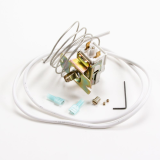
How to replace a freezer temperature control thermostat
If your freezer isn't freezing, the temperature control thermostat could be to blame. This step-by-step repair guide shows how to replace a chest freezer thermostat in less than 30 minutes.
Repair difficulty
Time required
15 minutes or less
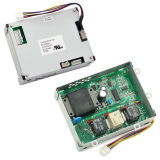
Replace the freezer electronic control board
The electronic control board-also called the main control board or the power control board (PCB)-manages the compressor and the defrost cycle. The control board activates the compressor to keep the freezer cold and runs the fans. The electronic control board monitors temperature sensors to control freezer temperature and the defrost cycle. Replace the electronic control board if it's not working properly.
Freezer electronic control board
Find the required part specific to your product.
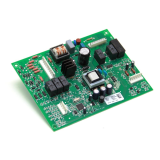
How to replace a freezer electronic control board
If your freezer isn't cold and you don't hear the fans or compressor running, the electronic control board could be the problem. This step-by-step repair guide and video show how to replace a freezer electronic control board.
Repair difficulty
Time required
45 minutes or less
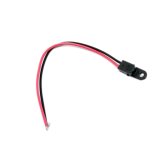
Replace the freezer thermistor
The thermistor is a temperature sensor inside the freezer. The electronic control board uses the reading from the thermistor to cycle the compressor on and off to maintain freezer temperature. Replace the thermistor if it's not sensing freezer temperature accurately.
Freezer thermistor
Find the required part specific to your product.
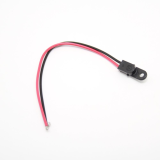
How to replace a freezer thermistor
If your freezer is too cold or not cold enough, the thermistor might be to blame. This easy-to-follow repair guide and video show how to replace a freezer thermistor.
Repair difficulty
Time required
45 minutes or less
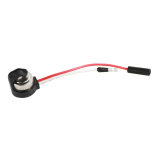
Replace the freezer defrost bi-metal
The freezer defrost sensor-also known as the defrost bi-metal or defrost termination thermostat-is next to the evaporator. It trips when the evaporator temperature gets too high, to protect the evaporator from overheating. When it trips, the defrost bi-metal shuts off the defrost heater. A defective defrost bi-metal prevents the defrost heater from working, causing frost to build up on the evaporator, causing a warmer freezer interior. Replace the defrost sensor if it prevents the defrost heater from working.
Freezer defrost bi-metal
Find the required part specific to your product.

How to replace a freezer defrost thermostat
If your upright freezer isn't cooling and its interior back wall is covered with frost, the defrost thermostat could be the problem. This repair guide and video show how to replace a freezer defrost thermostat with step-by-step instructions.
Repair difficulty
Time required
45 minutes or less

Replace the freezer defrost heating element
The defrost heating element melts frost from the evaporator fins to improve cooling. If the defrost heating element fails, excessive frost covers the evaporator fins. Replace the defrost heating element if it's damaged or not heating.
Freezer defrost heating element
Find the required part specific to your product.
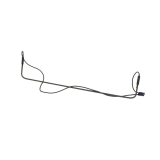
How to replace a freezer defrost heater
When a freezer isn't cold and has a frosty buildup on the evaporator fins, it could mean the defrost heater is broken. This step-by-step repair guide and video show how to replace a freezer defrost heater.
Repair difficulty
Time required
45 minutes or less
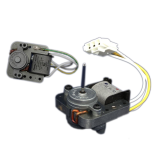
Replace the freezer evaporator fan
The evaporator fan mounts on the evaporator assembly. It moves air across the evaporator fins and through the cabinet for cooling. The freezer won't cool properly when the evaporator fan breaks. If the evaporator fan doesn't run when activated, replace it.
Freezer evaporator fan
Find the required part specific to your product.

How to replace a freezer evaporator fan
If your freezer is warm and you don't hear the hum of a fan, the evaporator fan could be broken. This DIY repair guide and video show how to replace a freezer evaporator fan in 6 steps.
Repair difficulty
Time required
45 minutes or less
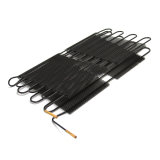
Clean the freezer condenser coils
Dust-covered freezer coils prevent the freezer from running efficiently and cooling properly. Unplug the freezer and clean the condenser coils using a coil brush. Vacuum up the dust. Clean the grill below the freezer door to allow proper air flow to the condenser.
Clean the freezer condenser coils
Find the required part specific to your product.

Replace the freezer condenser fan motor
The condenser fan is in the machine compartment of the freezer next to the compressor. It moves air across the condenser coils to help cool the hot refrigerant coming out of the compressor. Replace the condenser fan if it fails to run when activated.
Freezer condenser fan motor
Find the required part specific to your product.

Replace the freezer compressor
The compressor is a pump that an electric motor rotates. The compressor is the problem if the motor won't start when the start relay actives it, or if the motor runs but the pump doesn't compress the refrigerant. Have a service technician replace the compressor, because this repair requires access to the sealed refrigerant system.
Freezer compressor
Find the required part specific to your product.
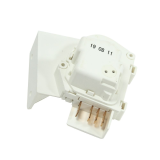
Replace the freezer defrost timer
The defrost timer controls the intervals between defrost cycles and limits the length of the cycle. During the defrost session, the timer activates the defrost heating element and prevents the compressor from running, so frost melts from the evaporator fins. Replace the defrost timer if it doesn't control the defrost heater and compressor properly.
Freezer defrost timer
Find the required part specific to your product.
Was this information helpful?
Most common symptoms to help you fix your freestanding freezers
Choose a symptom to see related freezer repairs.
Main causes: burned out light bulb, bad door or lid switch, faulty LED light board, wiring failure, control system failu…
Main causes: lack of power, bad compressor, refrigerant leak, bad thermistor, defrost system failure, dirty condenser co…
Main causes: compressor failure, no refrigerant, faulty sensor, control failure, broken defrost heater, bad defrost bi-m…
Main causes: damaged door or lid gasket, cracked cabinet liner, bad defrost bi-metal thermostat, broken defrost heater, …
Main causes: excessive frost, bad defrost heater, bad defrost bi-metal, control system failure, low refrigerant charge, …
Main causes: dirty condenser coils, condenser fan failure, dirty bottom front grill, leaky door or lid gasket…
Main causes: lack of power, control system failure, broken compressor start relay, locked up compressor, compressor moto…
Main causes: leaky door or lid gasket, broken defrost heater, bad defrost bi-metal thermostat, defrost control failure, …
Most common repair guides to help fix your freestanding freezers
Effective articles & videos to help repair your freestanding freezers
Use the advice and tips in these articles and videos to get the most out of your freezer.
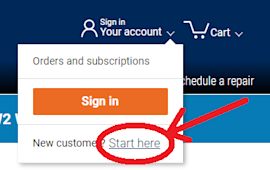
Learn about all the convenient features on our Sears PartsDirect website that make your parts purchases easier.…
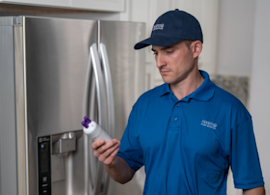
Get answers to frequently asked questions about Sears and Sears PartsDirect.…
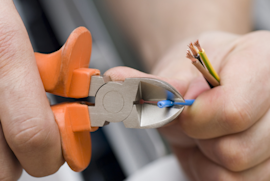
Learn how to repair broken, frayed or damaged wires in your appliances.…
Parts & More
Air Compressor
Bottom-Mount Refrigerator
Dishwasher
Electric Range
Parts
Condenser Fan Motor WR60X10275 partsBreather Tube 691245 partsRange Surface Burner Knob WB03T10332 partsClip Pump 425128P partsLawn & Garden Equipment Bolt 0J58620182 partsKnob W10159630 partsRange Oven Control Board EBR73323501Dryer Lint Screen Cover 3550EL2004BMicrowave Light Bulb 6912W3B002ELawn Tractor Deck Lift Link, Left 532151141Refrigerator Door Hinge DA61-03230BLine Trimmer Cutting Head Assembly 530054223
Power Sander
Treadmill